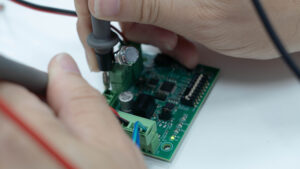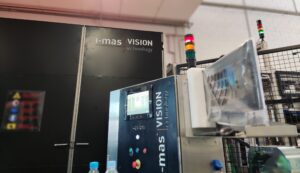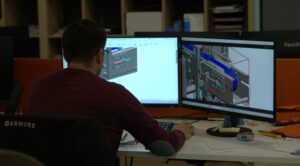Industrial automation has evolved from executing predefined instructions to making decisions autonomously. In the factories of the future, production lines no longer just follow a fixed cycle: they learn, adapt, and optimize based on the data they collect in real time. This change is driven by the integration of sensors, machine vision systems, collaborative robotics, artificial intelligence (AI) , and advanced control.
So-called self-adjusting lines represent a decisive step toward smart manufacturing. Thanks to continuous analysis of process parameters, these production cells can correct deviations without human intervention, anticipate failures, and improve overall performance.
The objective is clear: reduce downtime, avoid rejects, and ensure consistent quality in every unit manufactured within the most demanding industrial processes.
From reactive control to predictive control in industrial processes
For years, most industrial processes were based on a reactive approach: identifying errors after they occurred. Today, the combination of AI, computer vision, and traceability enables a predictive and adaptive approach. Data generated by machines, robots, and inspection systems feed models that continuously learn to detect anomalous patterns or early deviations.
For example, if a vision camera detects a variation in the surface finish of a part, the system can automatically readjust the position of a tool or modify the cycle time without stopping the line. This type of autonomous adjustment is made possible by the convergence of classic industrial control (PLC, SCADA) and advanced cloud-based analytics technologies.
Data, AI, and continuous learning in industrial automation
Continuous learning in industrial production is not just about accumulating data, but about turning it into actionable knowledge. Each manufacturing cycle generates information that, when properly analyzed, can optimize the next iteration. Thus, the system evolves over time, improving its accuracy and responsiveness to variations.
The key lies in connectivity: traceability systems collect information per unit manufactured, cloud-based analytics platforms process the data, and AI algorithms identify trends, correlations, and opportunities for improvement. This constant flow of feedback drives the concept of the learning factory, an environment where industrial automation is automatically and progressively optimized.
Robotics, vision, and real-time adaptability
Collaborative robotics and computer vision play a fundamental role in this new paradigm. Cobots equipped with vision systems can adjust trajectories, forces, or speeds according to the variability of parts or environmental conditions. Similarly, deep learning -based inspection cells learn from detected defects, improving their classification ability and reducing false positives.
These capabilities enable factories to achieve a level of flexibility that was unthinkable just a few years ago: producing different items, adapting to changes in materials or tolerances, and maintaining full traceability of the industrial process without stopping production.
The role of I-MAS in manufacturing the future
At I-MAS, we develop industrial automation, machine vision, and robotics solutions that lay the foundation for this evolution toward smart production lines. We design systems that learn from actual production, integrating sensors, AI, and industrial process control to create adaptive, efficient, and fully connected manufacturing environments.
Our vision is clear: to help companies make the leap towards more autonomous, flexible, and sustainable production, where every piece of data counts and every improvement becomes a learning experience. Because the future of industrial engineering is not just about automation, but about teaching machines to improve themselves.
Want to learn more about our services? Contact us or visit our projects section!



